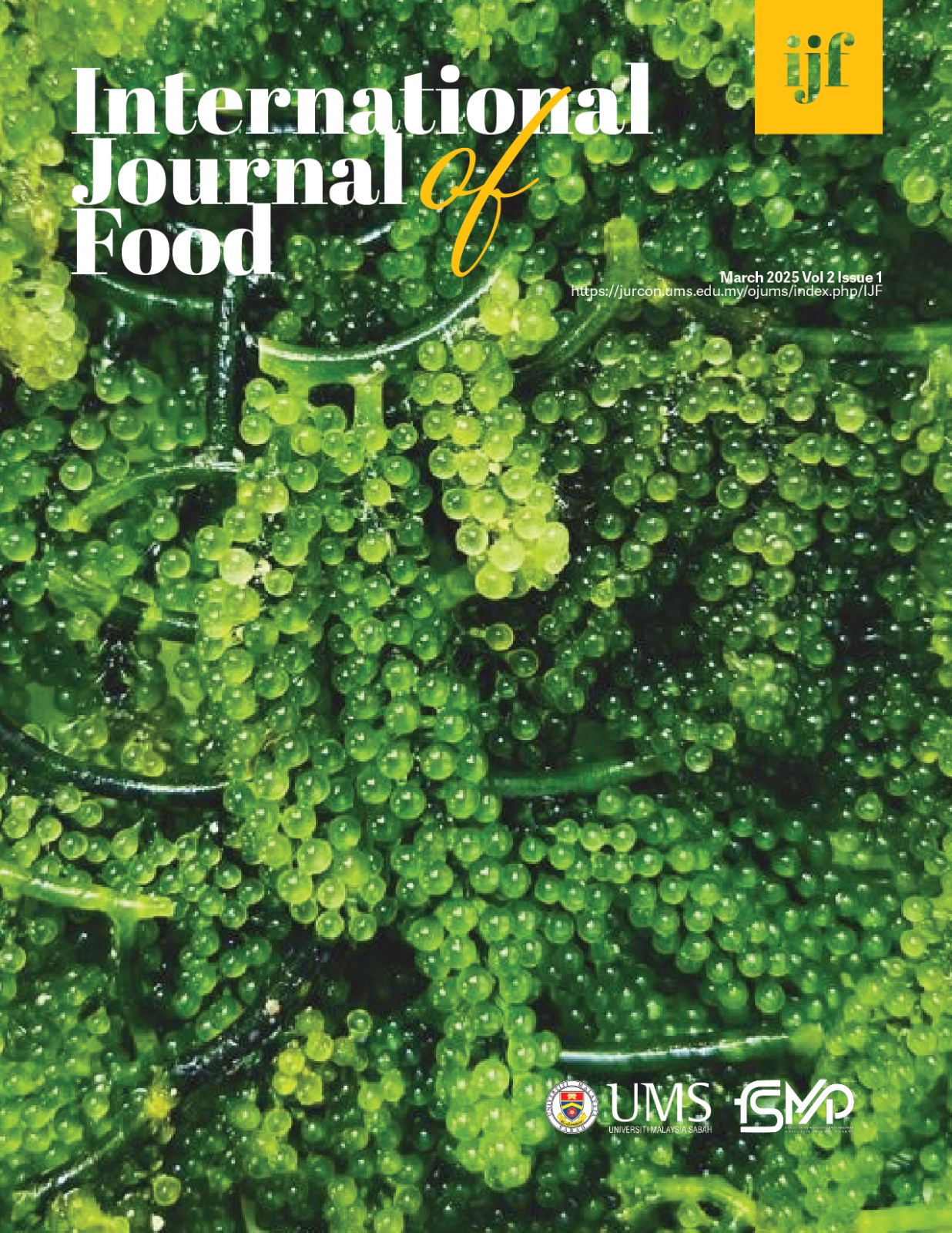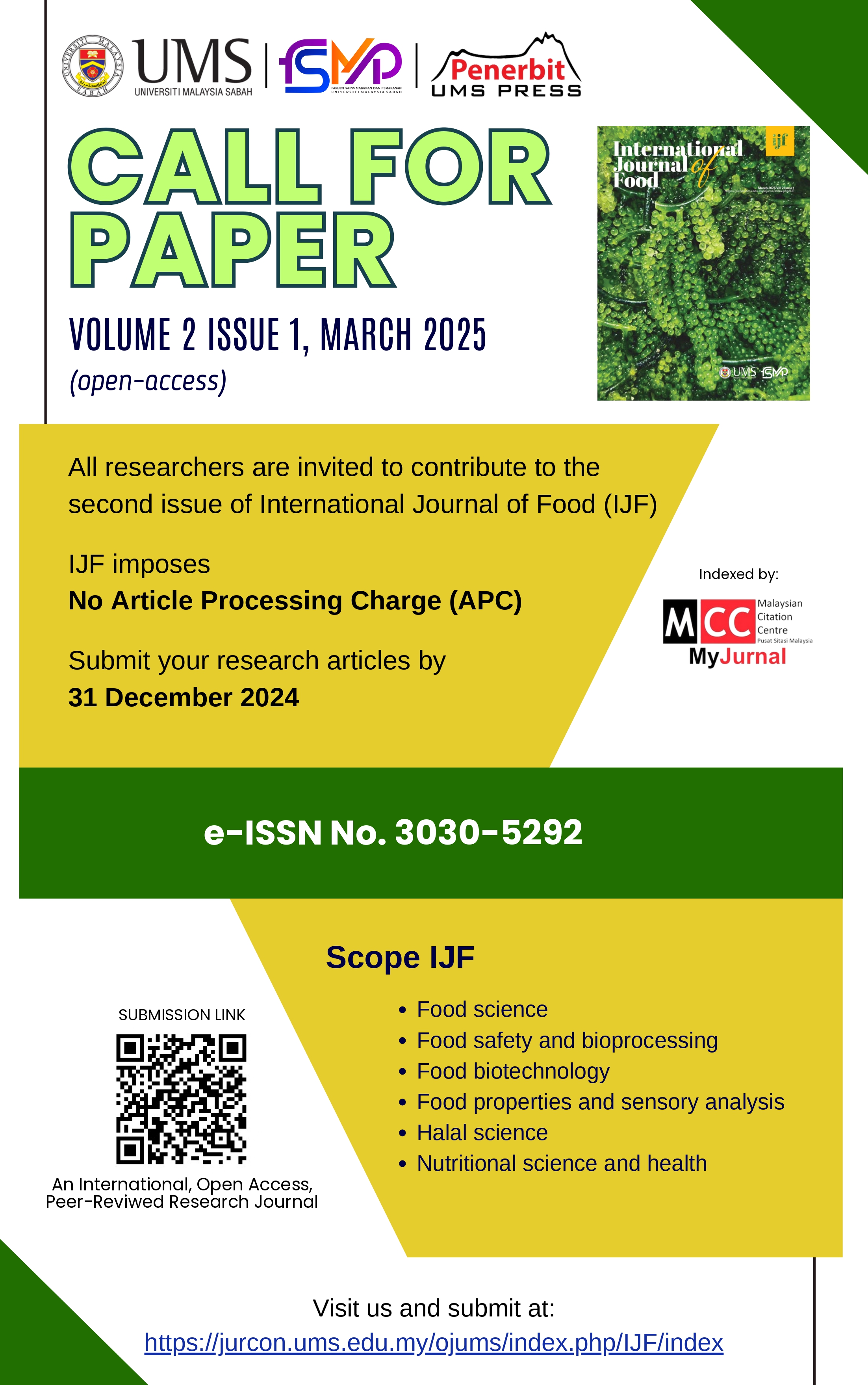The Physicochemical Properties and Consumer Preferences of Three Popular Durian Varieties Cultivated in Pahang
Abstract
Durian (Durio zibethinus) is a tropical fruit widely cultivated in Malaysia, primarily in the states of Perak, Pahang, and Johor. Pahang is known for producing high-quality durian. This study aims to investigate the physicochemical properties and consumer preferences of three popular durian varieties in Malaysia. In the present work, three different varieties of durian: “D197”, “D24” and “D200” were purchased from durian orchards in Pahang. Their physicochemical properties (L*, a*, b*, firmness) and non-volatiles (sugar and organic acid content) were measured. To investigate consumer preference, Hedonic tests were performed. Results showed that there was a significant difference (p < 0.05) found between all physicochemical properties studied. In terms of color, “D24” had the highest L*, “D200” had the highest a*, and “D197” had the highest b* values, which corresponded to the color intensity of each durian pulp. For firmness, “D200” obtained the highest value. Sucrose was the major sugar in durian, followed by fructose and glucose. “D200” had the significantly highest sucrose, whereas “D197” had the significantly highest glucose and fructose content. Six organic acids (succinic, malic, lactic, citric, acetic, tartaric acid) were identified in durian. Results from the Hedonic tests showed that all varieties were preferred by consumers, with “D200” obtaining the highest liking scores, on average. In conclusion, “D200” was the most preferred variety by consumers, likely due to its attractive appearance, sweeter taste accompanied with bitterness, and firmer texture among all varieties studied.






